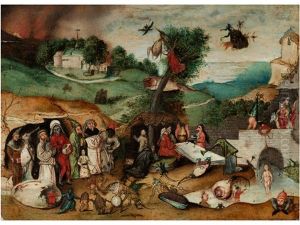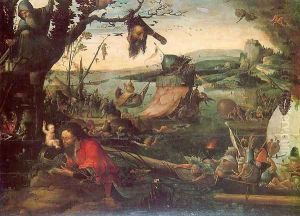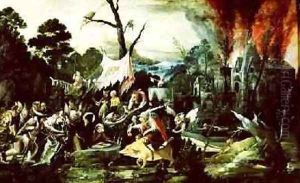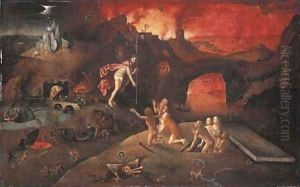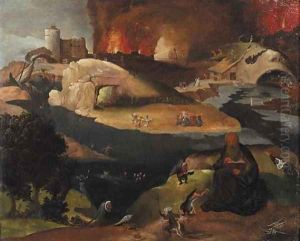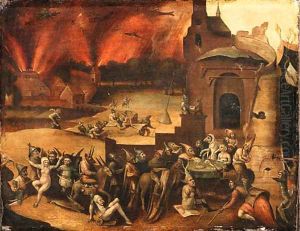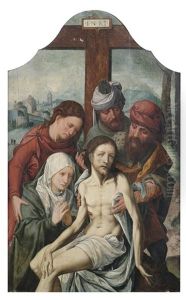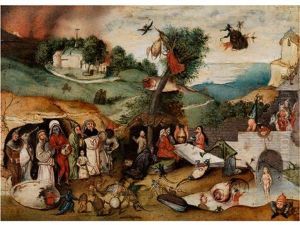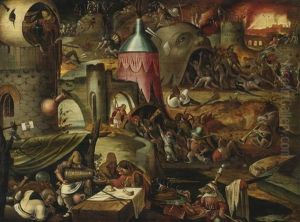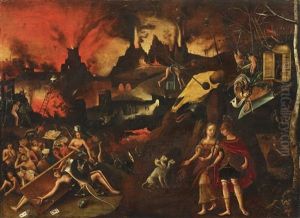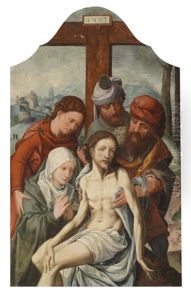Jan Mandyn Paintings
Jan Mandyn, also known as Jan Mandijn or Jan Mandyn van Haarlem, was a Flemish painter of the Northern Renaissance, born around the year 1500, likely in Haarlem, in what is today the Netherlands. However, much of his artistic activity took place in Antwerp, which was then part of the Habsburg Netherlands. Mandyn is primarily known for his fantastical and somewhat grotesque representations of religious and mythological scenes, which reflect the influence of Hieronymus Bosch, a key figure in Northern Renaissance art known for his imaginative and complex works.
Mandyn's exact birth date is not documented, and much about his early life and training remains a mystery. He is believed to have been active as an artist from around 1522 until his death in 1560. His style suggests that he was familiar with the work of Bosch and that he may have been one of the many imitators or followers who continued Bosch's legacy in the 16th century. Mandyn's paintings often feature bizarre creatures, distorted human figures, and chaotic landscapes that are reminiscent of Bosch's iconography.
The artist's move to Antwerp was likely motivated by the city's status as a major artistic and commercial hub at the time. In Antwerp, Mandyn became a master in the Guild of St. Luke, the city's painters' guild, in 1530. This affiliation with the guild suggests that he was a professional and respected artist within the community. Despite the influence of Bosch, Mandyn developed his own distinctive style, which was less refined but nonetheless appealed to the tastes of art patrons who were intrigued by the fantastical and moralizing elements in art.
Mandyn's works were not as well-documented as those of some of his contemporaries, and as a result, his oeuvre is not extensive. Some of his paintings have been lost over time, and others have been attributed to him based on stylistic analysis rather than concrete evidence. One of his most famous works is the 'Temptation of St. Anthony,' a theme that was popular during the Renaissance and one that Bosch himself had famously depicted.
Jan Mandyn died in 1560, having contributed to the Northern Renaissance through his unique interpretations of Bosch's imaginative vision. While he might not have achieved the same level of fame as Bosch, his works are still studied and appreciated for their contributions to the visual culture of the 16th century. Today, Mandyn's paintings can be found in various art museums, where they continue to fascinate viewers with their otherworldly scenes and complex symbolism.
